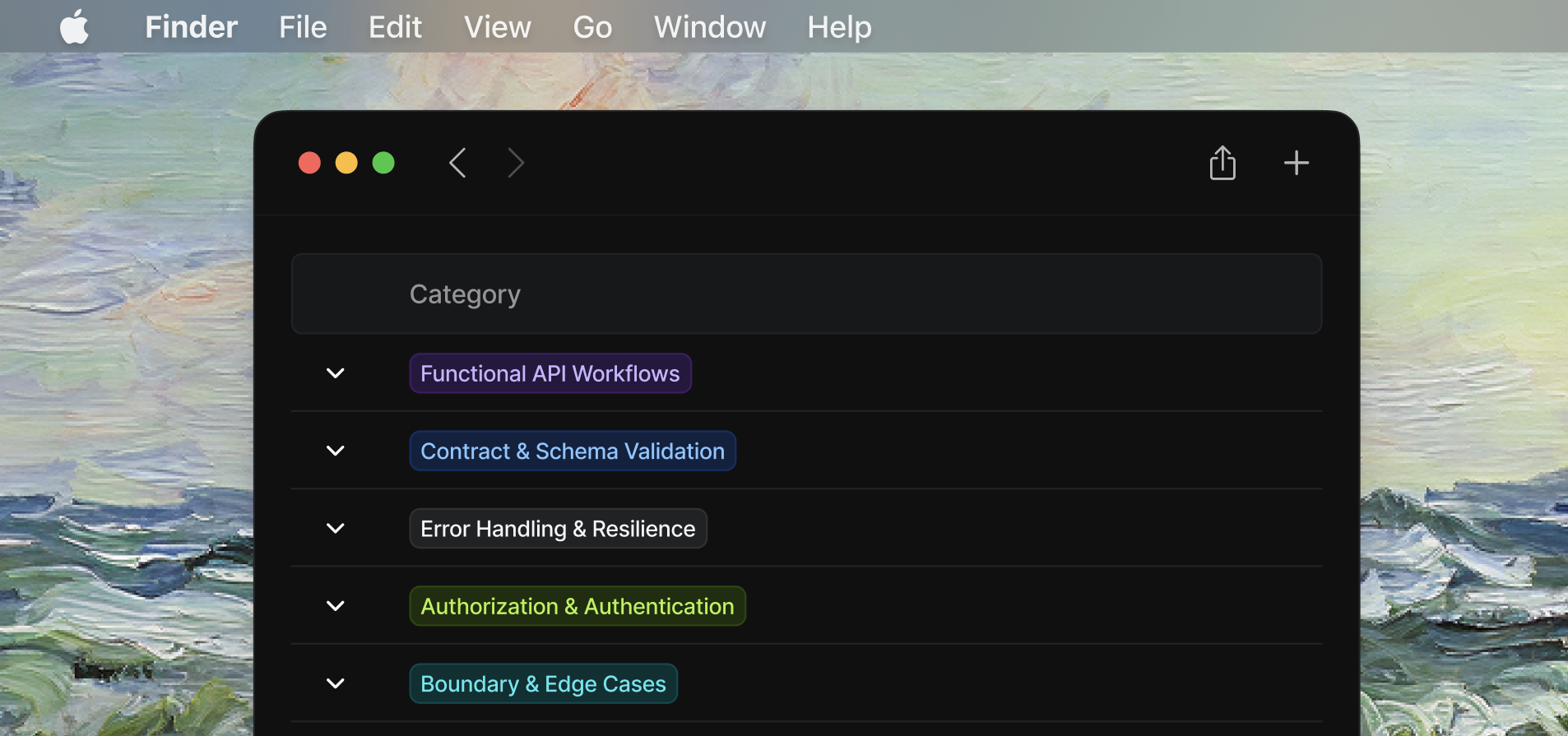Supported Test Types
TestSprite focuses on end-to-end value delivery, covering both frontend user journeys and backend service behaviors. The following categories map to what you saw in Overview and are generated automatically by the MCP server.
- Frontend (UI & Business-Flow Integration)
- Backend (API & Integration)
- User Journey Navigation: Multi-step workflows, page transitions, deep linking, browser history, and route guards
- Form Flows & Validation: Input validation, error messages, field dependencies, submission handling, and data persistence
- Visual States & Layouts: Component rendering, responsive design, loading states, empty states, and accessibility compliance
- Interactive Components & Stateful UI: Dropdowns, modals, tabs, accordions, drag-and-drop, state persistence, and real-time updates
- Authorization & Auth Flows: Login/logout, protected routes, role-based UI visibility, session management, and token refresh
- Error Handling (UI): Toast notifications, modal dialogs, inline errors, validation feedback, and graceful degradation
Test Lifecycle
TestSprite’s lifecycle is designed to be continuous and IDE-native.1
Discover & Understand
Analyze codebase structure, dependencies, and routes/endpoints. Normalize requirements into a TestSprite PRD.
2
Plan
Generate test plans per feature, mapping to the test types above. Prioritize critical paths and regressions.
3
Generate
Create runnable test code and fixtures. Synthesize data and environment configuration as needed.
4
Execute
Run tests in isolated environments with reliable orchestration. Capture artifacts: logs, traces, screenshots, videos.
5
Analyze
Classify failures (product bug vs. test fragility vs. environment). Summarize impact and correlate to code changes.
6
Heal & Maintain
Auto-update brittle selectors, data, and flows when safe. Propose edits when human approval is prudent.
7
Report & Integrate
Publish readable reports in your IDE and portal. Output signals for CI/CD quality gates.
How Frontend and Backend Tests Work Together
- UI flows validate end-to-end behavior as a user would experience it
- API tests validate service contracts directly for faster feedback
- The two layers share understanding of auth, data models, and error semantics to pinpoint root causes quickly
Where to Go Next
Overview
High-level capabilities and supported types
Create Tests for a New Project
First-time setup
Create Tests for a New Feature
Expand coverage incrementally
Continuous Monitoring
Keep coverage healthy over time
Test Maintenance
Strategies for stability and speed
Test Execution Issues
Diagnose and resolve failures